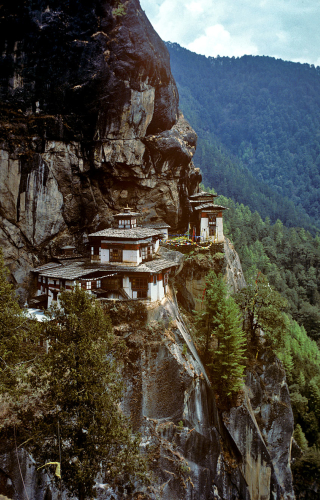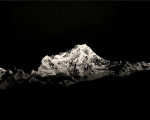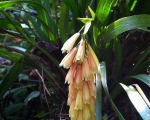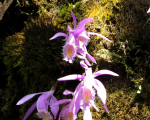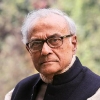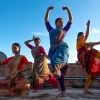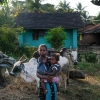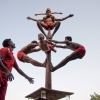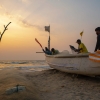Formed of a living god, Himalaya, supreme
monarch of the Mountains, rises in the north,
and bathing in the western and eastern oceans,
stretches out like a rod that could measure the earth.
(Kalidasa, Kumarasambhavam)
Long before the poet wrote this immortal stanza, for the inhabitants of this region, the Himalaya was the abode of gods, the journey there an inner spiritual quest. Home to diverse flora and fauna and a mosaic of peoples, each with their own distinctive culture, language and faith, the Himalaya has been central to the consciousness of the peoples of India. The Himalaya did not merely define the external geographical limits of the subcontinent, it impacted decisively the cultural and spiritual ethos of its peoples.
From the impenetrable, moss-encrusted forests of Arunachal in the east to the barren desert of Ladakh to the west, the people inhabiting the region have worshipped their deities on mountain peaks and paid homage to lakes and rivers. In Uttarakhand and Himachal, devi, the quintessential female power, reigns supreme even as the enigmatic Lord Shiva meditates to the north at Kailash. Since times immemorial, the devout have come here for the absolution of their sins while sages meditated as they sought salvation. Some of the greatest names in spiritual journeys have left their footprints in the Himalaya. Gautam Buddha was born in the foothills and Adi Shankaracharya found here his final resting place after his epic mission. And if the Himalaya has enriched our lives, our faith has enriched the Himalaya, adorning its rocks and ice, meadows, lakes, rivers and valleys with the exquisite jewellery of myths and legends.
No other mountain range in the world displays such a radical contrast between its flanks. The Himalaya shelters India from the icy northern winds, also ensuring that it receives the bounty of the monsoon clouds. Above all, the rivers descending from its glaciers, springs and slopes are veritably the lifeblood of the nation. The Ganga, the Indus, the Brahmaputra and their myriad tributaries have nurtured civilisations, and continue to sustain the people today.
But if a barrier with immense benefits in moderating and channelling the forces of nature, the Himalaya was never a wall of separation. Through millennia there has been movement across the mountains. Individuals like Fa Hsien and Hiuen Tsang came across the Himalaya from afar in search of knowledge. Rshavadeva attained nirvana at Kailash. Padmasambhava crisscrossed the Himalaya to spread the Buddha’s words. Atish Dipankara travelled from Vikramshila to Lhasa while Guru Nanak’s footprints can still be seen in the Himalaya and in Tibet. Connectivity across the Himalaya combined the sacred with the temporal. Individuals from either side of the mountains travelled for trade and pilgrimage. In the valleys of the Gori, the Kali and the Dhauli in Uttarakhand, memories of significant trans-Himalayan trade are still fresh, as it is in Sikkim and Arunachal. It is within living memory that boys and girls from Garhwal and Kumaon would often meet at the bustling trade mart of Gyanima Mandi in Tibet and be betrothed and wed. The girl would accompany her husband to her new home in some distant Himalayan valley and would meet her parents again when all would gather at Gyanima at some future year. The Kali Gandaki valley in Mustang was a ‘highway’ for trade and pilgrimage, as was the trail along the Sun Koshi. The list could be multiplied.
Our awe and wonder at the beauty and the divinity of the Himalaya has not been matched by understanding. There is still only limited appreciation of the munificence that the Himalaya bestows on India, and much to be done to protect its environment. Preservation of its forests is essential to maintain the balance of nature and ensure that rivers and plains are not choked with silt. The floods of 2013, ordained by nature but surely exacerbated by human intervention and negligence, are a warning that our responsibilities need to be discharged. The promotion of tourism and pilgrimages must remain within ecologically sustainable limits. Schemes for development must be mindful of the fragile ecosystem of the Himalaya. And here again, there would be different ground realities in the wide arc from the east to the west. The diminishing population in some parts of the mountains bears testimony to the lack of attention to their welfare.
For over six decades I have been greatly privileged to have been a visitor, albeit infrequently, to some of the valleys, forests and meadows of the Himalaya, to witness the play of light and shadow on the magnificent peaks that towered above. I have seen the stark landscape of trans-Himalaya that seems to beckon infinity and the compelling vastness of the highlands of Tibet, and have attempted to record on camera what the eye and the mind have seen. I am deeply grateful to Sahapedia for providing me with the opportunity to share some of my greatest moments of joy with a wider audience.
